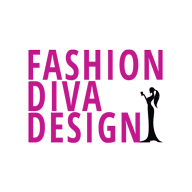Getting started as a fashion designer online, as a freelancer—or any other type of designer for that matter, product, graphic… it’s all largely similar—can be very difficult. The marketplace is competitive and when you are working as a freelancer or part of a smaller design agency, you will have to source a lot of your own work as well as complete the projects that you win. There’s a growing trend, especially amongst younger people, to quit the typical 9-5 in pursuit of establishing and sustaining yourself as your own business, and this applies to no industry more than designers.

Designers are always in very high demand for creating a vast range of products. From dresses and clothing items to logos, websites, and even physical products, it’s a great time to be a designer and the internet serves to provide endless potential for growth and development. There are so many different opportunities for employment, ad hoc work, and new projects. In fact, it is not finding work which is the issue, it is getting started and establishing yourself in an extremely competitive marketplace.
If you are a designer considering moving to the online space, especially as a self-employed designer or freelancer, then we are here to help you by going over some of the essential things which you need to do before you start trying to win projects and develop client relationships.
As a designer, there has never been a better time to establish yourself in your own right online. For those of you who can do this, the opportunities for success in an industry which is consistently growing are endless. If you have talent and can demonstrate it, you can quite easily find resounding success.
#1: Ensure You Are Skilled Enough
Whilst you may be good, are you good enough for commissioned private work? Freelance designers tend to be some of the most formidable people within their skillsets who find success because their talents, design, and artistic flair are worth a lot of money. If you are fresh out of college or have only been practicing your craft for a short amount of time, it is well worth looking at yourself critically and determining whether you are good enough yet. If not, you will get there eventually—you just need to keep practicing and honing your craft.
We appreciate that it’s not always as simple as looking at your work and going “Yep, that’s great!” or “Hmm… that could do with some work.” To that end, why not try dipping your toes in the water? If you are somebody who makes physical crafts and products, why not head to Etsy and see if you secure any sales? If you are a graphic designer, offer your services online and get a few jobs under your belt before you take the plunge and head for a full-time career as your own boss.
#2: Make Sure You Have the Right Tools
This applies more to website and graphic designers, however, there are other disciplines within design which also require the use of these tools, and then some. As a graphic designer, it is obvious that you are going to need some form of reliable computer and tools such as Adobe Creative Cloud. These are a must for a graphic designer, as you will use Illustrator, Photoshop, and InDesign as part of your day-to-day life. Although they are big investments, they are 100% necessary. If you create physical products or accessories, likewise, ensure that you have enough material to begin producing whatever it is you do on a larger scale.
By ensuring that you have the right tools, you can really hit the ground running and get to work on your first client’s project straight away, rather than having to delay things whilst you get your affairs in order. There’s nothing more detrimental to a client-contractor relationship than making them wait around whilst you get things in order, which should have already been sorted.
#3: Get a Portfolio Together
Very few people are going to be interested in you if you are unable to demonstrate that you are the right person for their project. Whilst not every designer will be suitable for every type of project, the best way you can secure work you have experience and an interest in is to put together a portfolio of your work online. This doesn’t just apply to design, either—every single freelancer who offers a creative service such as design, writing, and programming needs to be able to prove their worth.
If you are wondering how to make an online portfolio then don’t fret—there are plenty of websites which cater for creatives and you can get a robust portfolio online in a matter of minutes. If you don’t have anything to put in a portfolio then make something, anything which demonstrates your skill. Even though you won’t be getting paid for or using this work, it still shows that you are capable of producing something worth paying for.
#4: Market Yourself
Believe it or not, but potential clients aren’t just going to gravitate towards you just because you’ve put a portfolio online! You need to go out there and source your own work. This is where many new freelancers fall—they hate the fact that they have to find their own work and give up before they have even had a chance to get going.
There are several resources and services out there which exist to connect you, a designer, with clients. LinkedIn, Upwork and Freelancer.com are all great places to find work. It’s not just limited to that, though—you are a creative and the best way to source your own clients is by creating a website, linking it to your portfolio, and targeting companies and individuals within your areas of expertise. Once you have your first few projects done and dusted, you will find that securing new work is a lot easier through referrals and leads.
Use social networking, too. Instagram and Snapchat are perfect for any designer and you can use hashtags to reach a market who will be engaged by what they see. You don’t have to be spending tonnes of money on paid marketing to source work; it can easily be done free of charge by using best practices.
With more and more people trying to launch a design career on the internet, it is more important than ever to stand out from the crowd by demonstrating beyond doubt that you are one of the best at what you do. By understanding your skills and creating a suitable portfolio, you can easily demonstrate your worth to potential clients, which will help you secure that all-important first project.
Getting started as a freelancer is not easy though. This applies to every discipline, not just design, and it takes a lot of hard work and effort before you will begin to see consistency. As such, don’t just quit your job and go for it—develop your online presence over time and complete some projects in your spare time whilst still holding down a reliable source of income until you are stable enough to go for it.

